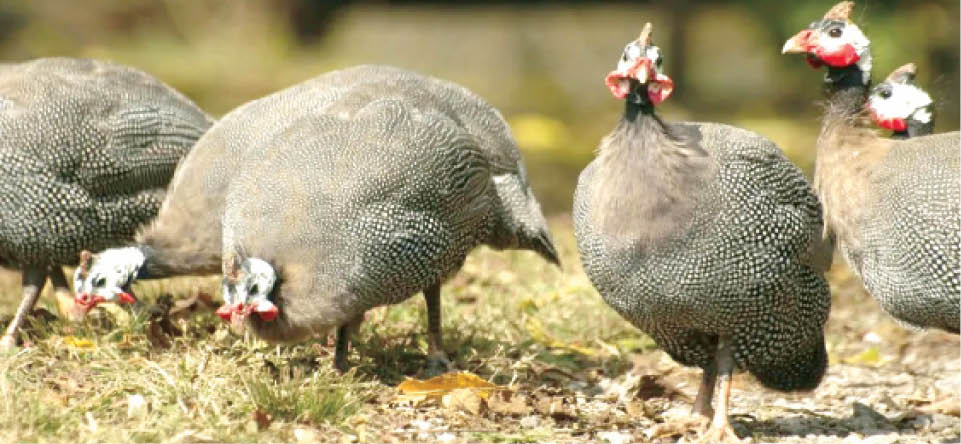How to become a successful guineafowl farmer
Guineafowls are wild birds which can, however, be domesticated. They are said to be the bird of the future and a good alternative to chicken and turkey. A guineafowl normally lays up to 30 eggs per year. Guineas are seasonal breeders and if you want to keep them for domestic purposes they need 2-3 square […]

Guineafowls are wild birds which can, however, be domesticated. They are said to be the bird of the future and a good alternative to chicken and turkey.
A guineafowl normally lays up to 30 eggs per year. Guineas are seasonal breeders and if you want to keep them for domestic purposes they need 2-3 square feet per bird.
- We’ll vote only pension-friendly candidates in 2023 – Pensioners
- NIGERIA DAILY: How Okada Ban Hits Lagos Residents
Their feeds may not be a huge burden on the farmer because they can feed even on vegetation and grains and without commercial feeds, they will always flourish.
However, guineafowls are not very good mothers because they tend to abandon their eggs after laying. To tend the eggs after laying, you need to invest in an incubator or look for a brooding hen, duck or turkey to lay and hatch them.
It takes a minimum of 28 days for the eggs to hatch – that is their incubation period of the eggs; each egg weighs 40-45 grams.
Dr Jacquie Jacob in Poultry Extension site advises farmers on how to manage the guineafowl.
“In the wild, guineafowl mate in pairs. This tendency also exists among domesticated guineas if there are equal numbers of males and females. As the breeding season approaches, pairs of guineas will wander off in search of nesting sites. It is not necessary, however, to have equal numbers of females and males to obtain fertile eggs.
“For most flocks, one male is usually kept for every four to five females. When guineas are kept in close confinement, one male may be mated with six to eight females.
“Guineas usually start laying in March or April and may continue to lay until October. A hen from a carefully managed flock may lay 100 or more eggs a year. Breeders generally produce well for two or three years. They can be kept for four to five years in small farm flocks. In such flocks, hens usually lay about 30 eggs and then go broody.
“The incubation period for guinea eggs is 26 to 28 days, similar to the incubation period for turkeys. If available, broody chickens can be used to hatch guinea eggs.
“Typical bantam chicken hens can sit on 12 to 15 guinea eggs, while a large chicken hen can sit on 20 to 28 guinea eggs. Guinea hens do not always make good mothers. Chicken hens tend to be much better mothers, and a large chicken can brood up to 25 guinea keets.”
Guineafowls are kept for their very delicious eggs and their meat is said to be more nutritious and delicious than chicken. Guineafowls are very noisy birds and if you live in the city, they are better kept in a space away from the neighbourhood, they don’t require a very big space.
You can either do it small scale or commercially. If you want to do them commercially, they are economical, they are in demand, easy to manage and less vulnerable to diseases
Guineafowls can also be kept to scare away predators; they can feed on small predators like insects and ticks, and they can also fight against snakes or mice and also rats.
By Vincent A. Yusuf & Grace Adetutu
